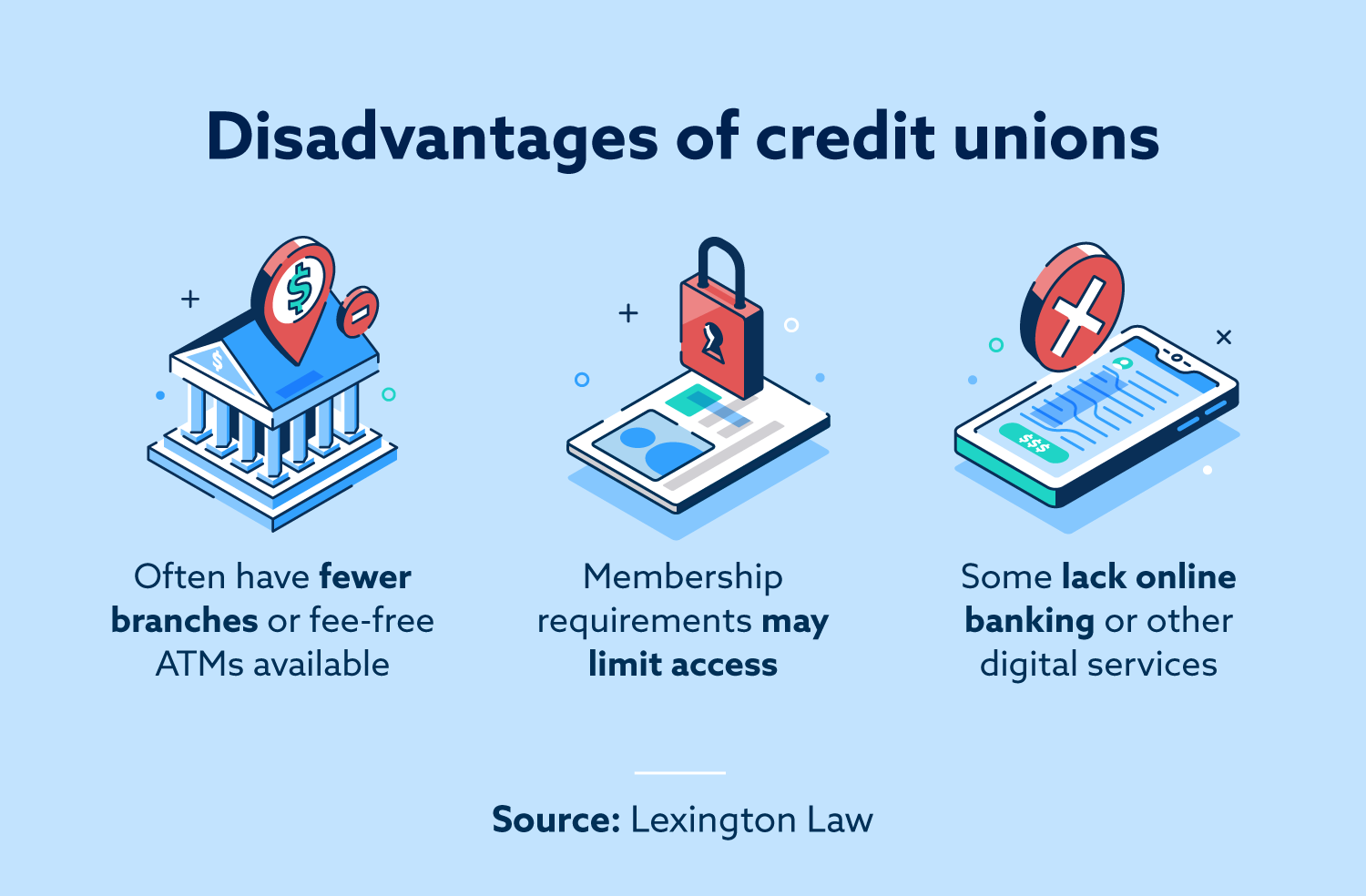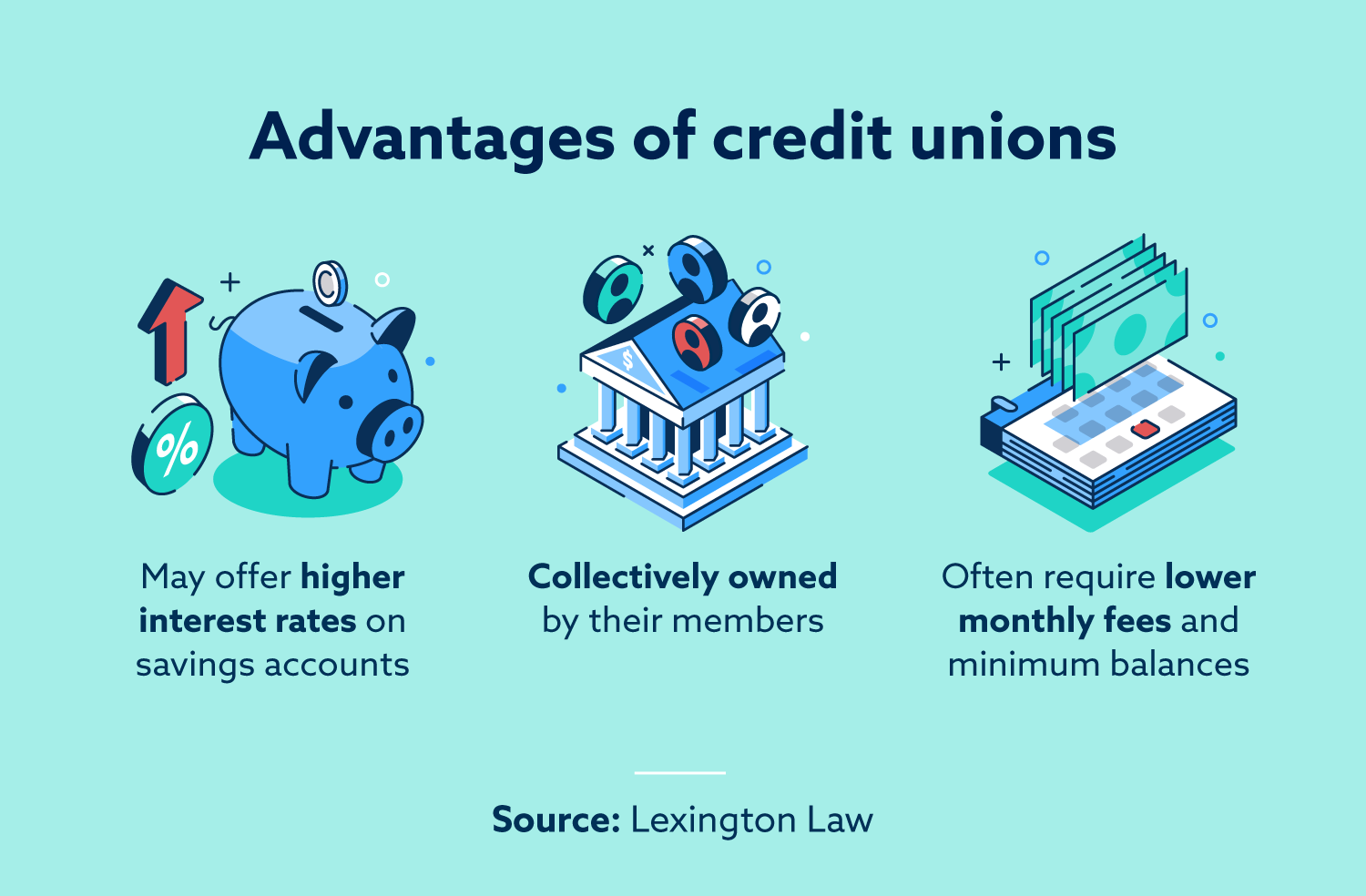The Ultimate Guide to Understanding Debt Unions

Credit report unions stand as unique economic entities, rooted in concepts of shared support and member-driven operations. As we navigate through the complexities of credit history unions, an informative trip awaits to lose light on these member-focused organizations and just how they vary from typical financial institutions.
What Are Lending Institution?
Lending institution are member-owned financial institutions that supply an array of financial solutions to their members. Unlike conventional banks, lending institution operate as not-for-profit companies, suggesting their main focus gets on offering their members as opposed to maximizing revenues. Participants of a cooperative credit union typically share a typical bond, such as functioning for the very same employer, coming from the same area, or becoming part of the very same organization.
Among the key advantages of lending institution is that they usually use higher passion prices on interest-bearing accounts and lower rate of interest on finances contrasted to banks. Credit Union in Wyoming. This is due to the fact that cooperative credit union are structured to benefit their participants straight, permitting them to hand down their incomes in the kind of far better rates and fewer fees. Additionally, credit unions are understood for their personalized client service, as they focus on building relationships with their participants to recognize their special monetary needs and goals
Background and Development of Cooperative Credit Union
The roots of member-owned financial cooperatives, understood today as debt unions, trace back to a time when areas sought alternatives to typical financial establishments. The concept of lending institution originated in the 19th century in Europe, with Friedrich Wilhelm Raiffeisen often credited as the leader of the participating banking movement. Raiffeisen started the first recognized credit history union in Germany in the mid-1800s, stressing area support and self-help principles.
The evolution of lending institution continued in The United States and Canada, where Alphonse Desjardins developed the initial cooperative credit union in Canada in 1900. Shortly after, in 1909, the very first united state credit score union was developed in New Hampshire by a group of Franco-American immigrants. These very early debt unions operated on the basic principles of mutual help, autonomous control, and member ownership.
Over time, lending institution have actually grown in appeal worldwide as a result of their not-for-profit structure, emphasis on offering members, and supplying affordable monetary product or services. Today, cooperative credit union play a crucial duty in the economic industry, offering community-oriented and accessible banking alternatives for individuals and services alike.

Subscription and Eligibility Standards
Subscription at a credit report union is commonly limited to individuals satisfying particular look what i found qualification standards view based on the establishment's founding principles and regulatory demands. Some credit report unions might only serve people that live or function in a certain location, while others may be tailored to employees of a certain firm or participants of a specific association.
Furthermore, cooperative credit union are structured as not-for-profit organizations, implying that their primary objective is to offer their members as opposed to generate revenues for investors. This concentrate on member solution commonly equates into more personalized focus, reduced charges, and competitive rates of interest on financings and financial savings accounts. By meeting the qualification requirements and becoming a participant of a credit union, people can access a variety of economic services and products customized to their certain needs.
Providers and Products Supplied
One of the key facets that establishes credit scores unions apart is the varied variety of financial product and services they offer to their participants. Lending institution commonly give standard financial services such as savings and examining accounts, lendings, and bank card. Participants can also benefit from financial investment solutions, consisting of retired life accounts and economic planning help. Lots of debt unions supply competitive interest prices on cost savings accounts and fundings, in addition to reduced charges compared to standard banks.
Moreover, credit scores unions typically supply practical online and mobile banking choices for members to easily manage their finances. They may offer perks such as shared branching, Continued allowing participants to access their accounts at other credit score unions across the nation. Some credit unions likewise supply insurance policy products like home, life, and car insurance coverage to assist members secure their assets and enjoyed ones.

Advantages of Financial With Debt Unions
When taking into consideration monetary establishments, exploring the advantages of banking with credit score unions reveals special advantages for participants seeking personalized solution and affordable rates. One substantial advantage of lending institution is their focus on tailored customer support. Unlike huge financial institutions, lending institution are member-owned and prioritize building solid partnerships with their participants. This indicates that lending institution team often have a much deeper understanding of their participants' monetary requirements and can use tailored solutions to help them achieve their objectives. In addition, cooperative credit union are understood for using competitive rate of interest on fundings and financial savings accounts. Since they are not-for-profit organizations, lending institution can often give lower finance rates, greater financial savings prices, and reduced charges compared to standard financial institutions. This can lead to considerable expense financial savings for members over time. Generally, financial with a lending institution can give a more tailored, cost-efficient, and member-centric economic experience.
Conclusion
In final thought, credit score unions stand out as member-owned monetary organizations that focus on offering their members over optimizing earnings. With beginnings dating back to 19th century Europe, credit scores unions adhere to concepts of shared support and member ownership.
Credit scores unions are member-owned financial institutions that offer a range of financial solutions to their members. The idea of credit score unions stem in the 19th century in Europe, with Friedrich Wilhelm Raiffeisen usually attributed as the leader of the participating banking movement.The development of credit history unions continued in North America, where Alphonse Desjardins developed the first credit union in Canada in 1900. Credit unions commonly offer traditional financial services such as financial savings and examining accounts, financings, and debt cards.When taking into consideration monetary establishments, exploring the benefits of banking with debt unions exposes unique advantages for members seeking personalized solution and competitive prices.